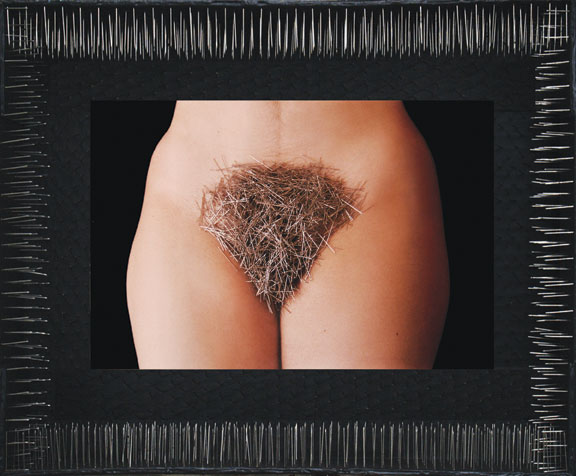« Reviews
Espejo de Lidzie (Lidzie’s Looking Glass)
Diana Lowenstein Gallery - Miami
Curated by Marilyn Sampera
By Irina Leyva-Pérez
The work of Lidzie Alvisa (born 1969) has always being autobiographic. This is evident in her latest solo exhibition, and her first in Miami, “Espejo de Lidzie” (Lidzie’s Looking Glass), at Diana Lowenstein Gallery. The show brings together a selection of pieces from as early as 2000 up to this year. Throughout these works, we can see how she has used as inspiration very personal experiences such as maternity, its impact on her body and her life, and her relationship with other human beings. There is an implicit questioning of life, and her place in the world, a quest of identity in the universal sense. Generally speaking, we can also see how frequently she has used her body as the starting point of many of her pieces. The tradition of body art has been explored profoundly, especially during the 1960s and ‘70s, when many artists used their body as the base for their work, including a massive proliferation of performances. In Alvisa’s case, we can trace it to artists such as Frida Kahlo and Cindy Sherman, whose art has influenced her work; Kahlo more thematically and Sherman formally.
The pieces selected for this show have in common the use of pins, which has become a trademark for Alvisa over the last years. Pins are related to pain by inference; in her images they are related to the idea of sacrifice. Pins are also representative of a craft connected to domestic life: sewing; bringing into the mix the feminine side of the trade; and the idea of home. There is also fetishism inherent in this instrument that could be associated with the pleasure-pain dichotomy. One of the pieces that better reflects this idea is Imán (Magnet) (2000), featuring an image of her hips, abdomen and tights with the pubic area covered by pins. Here she is referring to the same organ as the source of pleasure and pain, in the form of sex and maternity.

Lidzie Alvisa, Imán, 2000, photography, board, pins and acrylic, 11.02” x 13.77” x 1.96.” Courtesy of the artist.
Her photographs offer a visual imagery of what could be interpreted as feminine nature: a parity between delicacy and strength. A good example of this notion is the photograph from the Series Frágil (Fragile) (2016), which shows two gloves connected, one made of lace and the other of metal. However, her work is not feminist in the strict sense of the movement; she is just visually narrating her experiences from a protagonistic point of view. Her nudes are far from the complaisant traditional representation. Hers are the results of self explorations. Some can be seen as aggresive, an idea reinforced by the use of shiny metal pins over the flesh. At the same time, Alvisa’s imagery evokes the vulnerability of the human body.
There is a voyeuristic element implicit in the way she constructs many of her pieces. The black “boxes” covered with pins that appear in her work give the idea of a forbidden window through which the spectator is looking at very private scenes, her most intimate portraits.
(September 10 - October 30, 2016)
Irina Leyva-Pérez is an art historian, art critic and curator based in Miami. She has lectured at Edna Manley College of the Visual and Performing Arts and was assistant curator at the National Gallery of Jamaica. She is currently the curator of Pan American Art Projects, a regular contributor to numerous publications and author of catalogues of such Latin American artists as León Ferrari, Luis Cruz Azaceta and Carlos Estévez.
Filed Under: Reviews



































Leave a Reply
You must be logged in to post a comment.